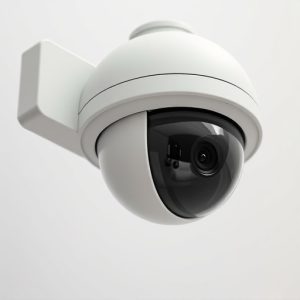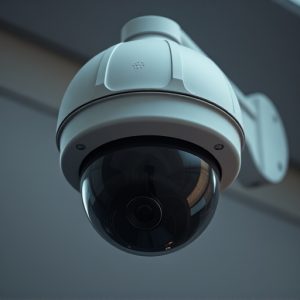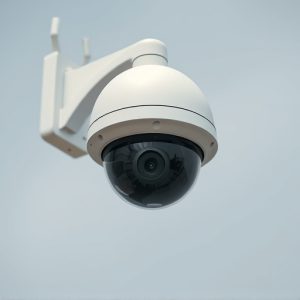Optimize Security: Mounting Heights for Fake Dome vs Bullet Cameras
Determining optimal mounting height for security cameras is key. Bullet cameras thrive at eye-level…….
Determining optimal mounting height for security cameras is key. Bullet cameras thrive at eye-level or slightly elevated for deterrence and quality, while Fake Dome cameras work best lower down for discretion. Aligning the camera's field of vision with its zone ensures coverage without drawing attention. Choosing between types depends on priority: discretion (Fake Dome) or features/durability (Bullet). Mounting at appropriate heights enhances both camera effectiveness, with considerations for environment and placement needs to select the better option based on security requirements.
“Enhance your property’s security with the right security camera mounting strategy. This guide explores the ideal heights for different camera types, such as Fake Dome and Bullet cameras, to maximize surveillance effectiveness. We’ll delve into environmental factors crucial for weatherproof installations while ensuring optimal visibility. Learn best practices for discreet yet powerful security systems, enabling you to make informed decisions for a comprehensive and professional setup.”
- Understanding Security Camera Mounting Heights: A Foundation for Effective Surveillance
- The Role of Camera Type: Fake Dome vs Bullet Cameras and Optimal Placement
- Environmental Factors: Considerations for Weatherproof Installation and Visibility
- Best Practices for Discreet and Effective Security Camera Systems: Tips for Professional Setup
Understanding Security Camera Mounting Heights: A Foundation for Effective Surveillance
Understanding the optimal mounting height for security cameras is paramount in establishing effective surveillance systems, especially with Fake Dome or Bullet Cameras. The ideal height varies based on several factors, including the camera’s field of view, environment, and intended purpose. For instance, placing a bullet camera at eye level or slightly elevated offers a clear, unobstructed line of sight, enhancing its ability to deter crime and capture reliable footage.
In contrast, Fake Dome cameras, with their discreet design, often benefit from lower mounting positions, ensuring they remain hidden while still capturing relevant areas. The right height ensures the camera’s field of vision aligns with the targeted zone, optimizing coverage without drawing unnecessary attention. Whether prioritizing clear visibility or covert observation, considering the unique characteristics of each camera type is key to achieving successful security surveillance.
The Role of Camera Type: Fake Dome vs Bullet Cameras and Optimal Placement
The choice between a fake dome camera and a bullet camera is a crucial one for optimal security. Each has unique advantages in terms of aesthetics and placement. Fake dome cameras blend seamlessly into their surroundings, making them ideal for discreet surveillance. Their curved design allows for wider field of view coverage, ensuring no blind spots. On the other hand, bullet cameras stand out more but offer enhanced durability and often advanced features like higher resolution and night vision capabilities.
When deciding on optimal placement, consider the environment. For indoor areas with natural lighting, fake dome cameras can be strategically positioned near windows or doors without drawing attention. Bullet cameras, however, may be better suited for outdoor environments, exposed areas, or where enhanced visibility is required. Regardless of type, elevation is key. Mounting at eye level or slightly above provides the clearest view, enhancing the camera’s effectiveness in deterring potential intruders.
Environmental Factors: Considerations for Weatherproof Installation and Visibility
When installing a fake security camera, environmental factors play a crucial role in ensuring optimal performance and longevity of your device. Weatherproofing is essential, especially for outdoor setups. The choice between a fake dome or bullet camera should consider the elements; both types offer excellent visibility but differ in their resilience to weather conditions.
For instance, fake dome cameras are often more suitable for indoor use due to their sleek design, which may not withstand harsh outdoor conditions as effectively. On the other hand, bullet cameras are designed with robust housing, making them ideal for outdoor applications, providing better protection against rain, snow, and extreme temperatures while maintaining clear footage. Proper mounting height is also critical; ensuring the camera has a clear line of sight reduces obstacles like trees or buildings that could obstruct visibility, enhancing the overall effectiveness of your security system.
Best Practices for Discreet and Effective Security Camera Systems: Tips for Professional Setup
When setting up a security camera system, especially using fake dome or bullet cameras, discretion is key. Best practices involve positioning cameras at strategic heights to maximize visibility while minimizing their presence. For indoor spaces, mounting cameras at eye level or slightly elevated positions, often between 6-8 feet (1.8-2.4 meters), offers a balanced view without drawing excessive attention. This height allows for clear capture of activity without appearing obtrusive.
Outdoor setups require careful consideration based on the environment. For residential properties, mounting cameras at mid-level heights, roughly 5-7 feet (1.5-2.1 meters) above ground level, can provide comprehensive coverage without looking too conspicuous. In commercial settings, professional installers might opt for higher or lower placements depending on the specific security needs and local regulations regarding camera visibility. The goal is to ensure effective surveillance while maintaining an aesthetic that blends seamlessly with the surroundings, making it harder for potential intruders to detect the cameras.
In conclusion, selecting the appropriate security camera mounting height is a nuanced process that depends on various factors. Understanding these elements—from camera type (e.g., Fake Dome vs Bullet cameras) to environmental considerations and best practices—is key to establishing an effective and discreet security system. By carefully navigating these aspects, you can create a comprehensive surveillance solution tailored to your needs.


